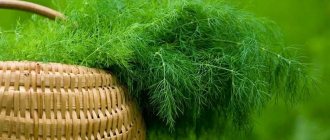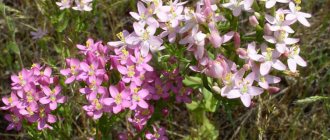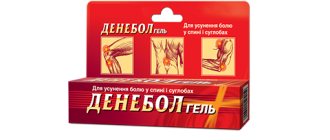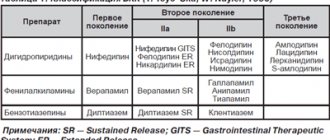Fennel, (Foeniculum vulgare), is a perennial herbaceous plant of the carrot family (Apiaceae), grown for its edible shoots, leaves and seeds. Native to southern Europe and Asia Minor, fennel is cultivated in temperate regions around the world and is considered an invasive weed. All parts of the plant are aromatic and are used as a flavoring agent, and the bulbous stems of the Florence fennel (Azoricum variety) and blanched shoots are eaten as a vegetable. The seeds and extracted oil resemble anise in aroma and flavor and are used to flavor soaps and perfumes, as well as to flavor candies, liqueurs, medicines, and foods, especially baked goods, sweet pickles, and fish.
You may know about it from your grandmother, who prepared a remedy for gas flow and indigestion for you. But fennel has actually been used for its nutritional properties since ancient times, and it plays an important role in traditional medicine.
In the ancient world, the Romans, Greeks and Egyptians used fennel as part of their ceremonies. It served as a symbol of health and pleasure. It has also been valued for its ability to soothe the digestive system for thousands of years.
Today, this popular vegetable continues to be one of the most widely used herbal plants. Fennel essential oil and all parts of the plant are used in cooking, baking, and as a medicine for more than 40 types of disorders.
With its anti-inflammatory, antimicrobial, antiviral, antitumor and antispasmodic properties, to name a few, it is obvious why fennel has been considered a valuable plant for thousands of years.
What is fennel? Fennel bulb versus fennel seeds
Fennel is a winter vegetable similar to celery with an interesting licorice flavor. Although the taste may take some getting used to at first, as it provides a huge amount of health benefits.
The plant is native to the Southern Mediterranean region and, thanks to its cultivation properties, has grown rapidly in the northern, eastern and western hemispheres.
The scientific name for fennel is Foeniculum vulgare. It is an ancient perennial herb with feathery leaves and yellow dill-like flowers. Fennel is known for its highly aromatic properties, smelling slightly like anise but with warm and woody undertones. The peak growing season for fennel is autumn and winter.
Fennel is recognized by its white bulb and long green stems. It is related to other stem vegetables such as celery and parsnips. All parts of the plant are edible, including the bulb, seeds, stem and leaves.
The onion can be chopped and added to salads, hash, pasta dishes and much more. It adds a fresh and crisp texture to any dish, and a sweet licorice flavor. Fennel bulb contains a number of phenolic compounds, including bioflavonoids, phenolic acids, tannins, coumarins and hydroxycinnamic acids.
Fennel seeds are rich in flavonoid antioxidants and contain a concentrated source of micronutrients. Fennel seeds are used to make fennel essential oil, first by crushing it and then using a process called steam distillation.
The content of the article
Growing in open ground
Fennel has a thick, spindle-shaped tap root. The stem is erect, branched. The leaves are pinnately dissected. The plant reaches up to 2 m in height. The fruit is ovoid-oblong with pronounced blunt ribs, elongated at the edges. The petals are broadly ovate, yellow, notched at the apex. The grass is propagated by sowing seeds or dividing the bush.
Requirements for landing
Deadlines
Best materials of the month
- Coronaviruses: SARS-CoV-2 (COVID-19)
- Antibiotics for the prevention and treatment of COVID-19: how effective are they?
- The most common "office" diseases
- Does vodka kill coronavirus?
- How to stay alive on our roads?
Fennel ripens quickly, so it can be rooted throughout the warm period of the year. He does not tolerate long daylight hours. To get a harvest, the plant is planted in the ground from April 15 to the end of May and from August 15 to September 15. To obtain planting material for next year, wait until the seeds are completely ripe. They can only be obtained from early spring sowing (late April). Otherwise, fennel is grown as seedlings in pots at home. Among the sprouts that have emerged, the strongest is selected and rooted in open ground. In order for the plant to take root, the beds are covered with film.
The soil
Fennel grows well on loamy, sandy loam soils and black soil. In the wild, it is found in weeds, rocks, foothills and steppes. However, to obtain a high yield, the soil for sowing must be moist, loose and fertile. To do this, humus, sand, sawdust, compost, dolomite flour and ash are added to the soil.
Place
Choose a sunny or slightly shaded place for planting. The optimal temperature for growing fennel is 16-20 degrees above zero. When the indicator decreases to 7 degrees or increases to 24 degrees, growth slows down.
It is recommended to plant the plant near cabbage or cucumbers, since they are also moisture-loving. In addition, fennel essential oils repel aphids, thereby protecting vegetables. The plant should not be planted in close proximity to beans, beans, tomatoes, spinach and peppers.
Planting by seeds
Fennel fruits are oblong seeds of greenish-brown color, measuring 3 mm x 10 mm. When planted in early spring, it blooms in July. The seeds ripen in September. They are collected from umbrellas.
First of all, it is necessary to moisten and feed the soil. For 1 sq.m. future beds add 0.5 kg of ash and a bucket of humus and compost. If the soil is too depleted, additionally add ready-made liquid fertilizers. The seeds are buried 2 cm into the ground, maintaining a distance between rows of 40 cm. The first shoots appear after 3 weeks, since essential oils slow down the penetration of moisture into the kernels, as a result, their growth is inhibited. The seedlings are thinned out. The distance between plants should not be less than 15 cm.
Primary requirements:
- Sufficient hydration. Remember, fennel loves moisture. Without regular watering, vegetable varieties will not produce fleshy heads, and the plant will stop growing and begin to die. The soil should always be moist. In dry weather, fennel is watered every other day, and in the fall, during the rainy season, as needed.
- Removing flower stalks when there is no purpose for collecting seeds.
- Loosening the soil, weeding, mulching. These operations will help maintain moisture in the soil and relative cleanliness in the beds.
- Rolling vegetable varieties. The procedure improves the setting of heads.
- Feeding with chicken manure, organic matter, and ash throughout the season.
For greens, the medicinal variety of fennel is harvested when the base of the root is no more than 1 cm in diameter, without waiting for the crop to flower. The top is cut off, used fresh or dried, frozen, or added to canning. Harvesting of the vegetable variety occurs during the period when the head of cabbage reaches a size of 10 cm. After this, it is consumed immediately or placed for safekeeping in a dark, cool and damp room. In the second case, the head of cabbage is cleared of leaves, the stems are cut, and 10 cm of petioles are left without touching the roots.
Fennel beneficial properties
Improves bone health
Thanks to its calcium content, fennel helps maintain strong and healthy bones. One cup of fennel contains about 43 milligrams of calcium, which may be beneficial for those who do not eat enough high-calcium foods and may be calcium deficient.
Research shows that increasing your calcium intake from dietary sources increases your bone mineral density.
But calcium isn't the only bone-building nutrient found in the onion. Fennel also contains magnesium, phosphorus and vitamin K, which all play a role in maintaining bone strength.
Improves skin health
Fennel is rich in vitamin C, providing nearly half the recommended daily value in just one bulb. Vitamin C is a powerful antioxidant that can help reduce free radical damage that can lead to premature aging.
Vitamin C is also essential for collagen formation and is a powerful protector of skin's appearance, making it a good choice for naturally slowing aging. Vitamin C deficiency is called scurvy, which results in an inability to form collagen properly, leading to bleeding gums and bleeding under the skin.
Because of these functions, adequate intake of vitamin C is critical to reducing wrinkles and maintaining healthy skin. The recommended daily allowance is 60 milligrams per day, but getting more vitamin C from whole foods like fennel will help keep your skin healthy from the inside out.
Lowers blood pressure
Fennel may help reduce blood pressure and inflammation due to its high potassium content and low sodium content. Potassium works against sodium to help fight high blood pressure in the body.
A high-potassium diet can reduce systolic blood pressure by 5.5 points compared to a high-sodium diet. But don't expect your blood pressure to drop overnight. It will take about four weeks of consuming a high-potassium diet to see a drop in blood pressure.
Digestion
Due to its ability to facilitate digestion. Since fennel is high in fiber, it can help maintain a healthy digestive system. The muscles in the digestive system need dietary fiber to provide most of the muscles in the digestive tract and to increase mobility or movement. Because digestive problems such as constipation and IBS are so common in adults, fennel is an excellent addition to any diet, which is why it is one of the foods recommended for the healing diet.
Additionally, fiber acts like a little brush as it passes through the digestive system, cleaning the colon of toxins that could potentially cause colon cancer. Fennel itself can act as a laxative, helping to flush out toxins.
Fennel has a significant amount of data to support its digestion-boosting activities. Researchers note that ginger, peppermint, citrus fruits, dandelion and chamomile also aid digestion.
It is also common practice in some cultures to chew fennel seeds after meals to aid digestion and eliminate bad breath. Certain oils contained in fennel help stimulate the secretion of digestive juices.
Fennel may also be beneficial for people with acid reflux. Adding fennel to your diet can help balance the pH levels in your body, especially in the stomach, and may reduce reflux after eating.
Increases satiety
Fiber contains no calories but provides bulk, increasing satiety. Humans do not have the enzymes needed to break down fiber, so it cannot be absorbed as calories. Fennel provides 7 grams of non-calorie, filling fiber.
Research shows that high-fiber diets can help people lose weight effectively. A 2001 study found that participants who added 14 grams of fiber per day to their diets without changing anything ate about 10 percent fewer calories per day and lost about two pounds in four months. Increasing your fiber intake by adding fennel and other high-fiber foods to your diet can be an easy way to feel more satisfied and experience weight loss.
Reduces colic
Infantile colic, although a relatively common condition, can have a significant impact on parents of a newborn. Most colicky parents can probably try anything to calm a crying baby.
The current medicine used for colic, called dicyclomine hydrochloride, can have some serious side effects and may not always be effective. But researchers have found that fennel seed oil has been shown to reduce pain and increase mobility in the small intestine, making it an excellent natural remedy for colic. Fennel also helps calm your baby and reduce bloating.
In a 2003 study, researchers compared fennel seed oil with a placebo in 125 children. The group receiving fennel seed oil was reported to have 65% less colic than the control group, with no side effects.
While this research may be promising and many desperate parents may want to run out and buy fennel oil, there is currently no safe dose for infants. The safest way to use it to treat infant colic is to feed fennel to the mother.
Helps prevent cancer
Fennel has been used for centuries in Chinese medicine to treat inflammatory conditions such as insect bites or sore throats. Fennel's ability to reduce inflammation has led researchers to investigate whether fennel's properties could be applied to other inflammatory diseases, including various forms of cancer.
Fennel contains an oil called anethole, which has been shown in some clinical studies to act as a natural cancer cure by helping to reduce the growth of breast cancer cells. Anethole is thought to reduce inflammation, which can lead to cancer, although further research is needed to determine exactly how it can be used.
Other anti-inflammatory nutrients are also found in fennel, particularly selenium, a trace mineral that may help reduce cancer death rates. A large study of more than 8,000 participants found that selenium actually reduced mortality and reduced the likelihood of future cancer.
Reduces the risk of cardiovascular disease
High fiber foods, especially the soluble fiber found in fennel, have been shown to help lower blood cholesterol levels. A high-fiber diet can help reduce your overall risk of heart attacks and strokes by helping to lower your blood cholesterol to normal levels.
In 2021, a study published in the Journal of Menopausal Medicine found that when postmenopausal women used fennel to improve cholesterol levels, it resulted in small positive changes in LDL and HDL cholesterol, as well as triglyceride levels.
Its high fiber content and potassium content make fennel a double whammy in reducing the risk of heart disease by lowering cholesterol and blood pressure. Fennel is also rich in other potentially cardioprotective vitamins, such as folate and vitamin C.
Eye health
Macular degeneration is the leading cause of age-related vision loss. Although the exact cause is unknown, antioxidants that help reduce inflammation, such as certain flavonoids, vitamin C, and zinc, may help improve vision or slow the progression of the disease.
Fennel contains many of these vision-preserving nutrients. Thanks to its high content of flavonoids, vitamin C and minerals, it can help reduce oxidative damage and inflammation, and may also help prevent macular degeneration.
May ease menopause symptoms
The 2021 Menopause Study shows that using fennel, a phytoestrogen, may help improve menopause symptoms. The researchers analyzed 90 women aged 45 to 60 who had been postmenopausal for at least one year (no more than five years) and had at least mild menopausal symptoms. Participants received fennel capsules or a placebo daily for eight weeks.
Fennel recipients experienced significant improvement in symptoms, but placebo recipients did not. Researchers concluded that fennel may help relieve menopausal symptoms in women with low estrogen levels, as well as those who have experienced early menopause or have had a hysterectomy or oophorectomy. However, a larger trial is required to confirm these findings.
And a 2021 systematic and meta-analysis published in the Journal of Menopausal Medicine found that when fennel is used to relieve menopausal symptoms, it helps reduce vaginal itching, dryness, sleep problems, and vasomotor symptoms such as night sweats, hot flashes, and hot flashes. Fennel also helped improve sexual function and sexual satisfaction.
Stimulates breast milk production
Fennel is used as a galactogenic agent for breastfeeding women. Galactagogues increase breast milk production. Although research into whether fennel is effective in stimulating breast milk production has found that many women who choose to use herbs as natural galactologists most often try fennel, milk thistle, and rose goat grass
Folk recipes
Expectorant
Method of preparation: pour 30 g of fennel seeds into 200 ml of boiling water, leave for 20 minutes, strain. Drink 100 ml four times a day before meals.
Diuretic
Used to relieve swelling. Preparation principle: 5 g of fennel fruits are brewed in 200 ml of water, left in a warm room for 10 minutes, filtered. Drink 150 ml 3 times a day.
Carminative, expectorant
Creation principle: brew 30 g of fennel in 200 ml of boiling water, place in a water bath for a quarter of an hour. Cool, strain, bring to original volume (add water). The infusion is heated before use. Take 4 times a day, 100 ml (adults) and 15 ml (children).
To eliminate excess gas formation and treat dry cough, fennel oil is used. The product is a colorless liquid with a strong odor (like anise). It is obtained by treating fruits with water steam. Fennel oil has a bitter-camphor taste with sweetish notes. The liquid consists of 60% anethole.
Sedative
The healing decoction is prepared as follows: pour 5 g of fruits into 250 ml of water, cook for 30 minutes over low heat, filter. Take 50 ml (adults) and 10 ml (infants) before meals 4 times a day.
Lactagogue
Fennel tea is a refreshing drink that enhances milk production in nursing women. To prepare it, brew 10 g of seeds in 150 boiling water and leave for 5 minutes. Drink 4 times a day. To achieve a pronounced effect, take regularly in strictly prescribed doses (600-800 ml) throughout the day.
Fennel oil
Effect on the body:
- removes waste and toxins;
- eliminates constipation and diarrhea;
- normalizes the functioning of the digestive tract;
- removes bloating;
- restores the functioning of the liver, kidneys, and spleen after an overdose of alcohol;
- activates the body’s own production of estrogen and the activity of the endocrine glands;
- relieves premenstrual conditions and menopausal symptoms;
- calms the nervous system.
Fennel oil exhibits aphrodisiac properties and has an antifungal effect. Interestingly, after sanitizing the air in the room (2 drops of the product per 5 sq. m.), the number of microbes decreases by 5 times.
The aroma of the oil has a sedative effect on the central nervous system: it relieves complexes, fears, obsessive thoughts, and gives a feeling of harmony, independence, and freedom. Used in folk and traditional medicine, cosmetology internally and externally in the form of compresses, applications, rubbing, massage mixtures.
Fennel oil is used for:
- air aromatization;
- enrichment of cosmetics (tonics, creams, masks, shower gels, scrubs, lotions, shampoos) with useful biologically active substances;
- treatment of influenza, pneumonia, pharyngitis, bronchitis, acute respiratory viral infections, acute respiratory infections (inhalations);
- improving cardiac conduction, lowering blood pressure, relieving arrhythmia;
- stimulation of the gastrointestinal tract;
- dissolving kidney stones;
- relieving nausea, colic, hiccups, gag reflexes.
In cosmetology, fennel oil is used as a powerful antioxidant that has a rejuvenating effect on the dermis. It increases skin elasticity, smoothes wrinkles, and inhibits the aging of body cells. The oil nourishes, tones the dermis, increases its elasticity, especially in the hips, bust, abdomen and eliminates cellulite. The product prevents the appearance of acne and eliminates acne in adolescents.
Lifting mask for face and décolleté
Its purpose is skin tightening. With regular use, fine wrinkles are smoothed out, the contour of the face becomes clearer, the dermis acquires elasticity and firmness, and the double chin “goes away.” The processes of active production of collagen and elastin are launched in skin cells, which maintain its youth and beauty.
Indications for use: age spots, dry skin, facial wrinkles, double chin, yellow and gray dermis, blurred facial contour.
Homemade lifting masks with fennel have smoothing, tightening and rejuvenating effects, so they are suitable for caring for mature, aging dermis.
Contraindications: obesity, open wounds on the surface, age under 30 years, vascular, skin diseases, plastic surgery performed before six months, intolerance to mask components.
Ingredients: white clay (15 g), egg yolk (1 pc), jojoba oil (15 ml), fennel, rose and neroli (1 drop each). Mix all components, apply to cleansed skin, take a horizontal position (to avoid sagging of the dermis), lie down for 30 minutes. Wash off the mask with contrast water. Perform the procedure 2-3 times every 7 days for 1 month.
Anti-cellulite massage oil
Eliminates fatty tubercles and orange peel by accelerating metabolism, increasing blood flow, and normalizing water-salt balance.
Components of the anti-cellulite product: olive oil (50 ml), grapefruit, patchouli, lime, fennel (5 drops each). Mix the resulting composition thoroughly, rub into problem areas 2 times a day during the first week and 1 time during the second. When cellulite resolves, apply oil at least 3 times every 10 days as a preventive measure. If you add an additional ingredient, clay, to this recipe, the product can be used for cosmetic wraps.
Eye cream
Fights the harbingers of old age - wrinkles that appear after 35 years, nourishes the delicate dermis around the eyes, and has a rejuvenating effect. Any baby cream (15 ml) is suitable as the basis of an anti-aging cream, which is preheated in a water bath and add 4 drops of myrrh and fennel oils. The composition is applied to the eyelids 1 hour before bedtime.
Nourishing mask for face and hands
Activates metabolic processes, relieves irritation, improves blood circulation, slows down age-related changes, relieves fatigue, softens and rejuvenates the dermis. To prepare, mix cottage cheese (5 g), quince pulp (1 piece), fennel oil (3 drops), egg yolk (1 piece). The fruit is pureed in a blender, the remaining ingredients are added to the resulting pulp, mixed, and applied to the hands and face for 15 minutes. After a quarter of an hour, rinse with water and moisturize.
Dill water
After birth, the baby’s gastrointestinal tract begins the process of adaptation of the digestive system to the consumption of breast milk or formula. Because of this, almost all children develop intestinal colic within a month, caused by bloating and excessive gas formation. To alleviate the baby's condition, dill water comes to the rescue. It is a solution of fennel oil (0.1%). Absolutely safe for children from birth. Interestingly, the tincture of fennel fruit got its name due to the fact that the herb is popularly called “pharmacy dill.”
Beneficial features:
- relaxes smooth muscle spasms;
- is a diuretic;
- stimulates the production of beneficial microscopic flora;
- removes putrefactive formations;
- reduces pressure on the intestinal walls;
- dilates blood vessels;
- relieves inflammatory processes;
- improves bile secretion, kidney function, digestion;
- has antibacterial properties;
- removes phlegm when coughing;
- increases passage in the bronchi;
- relieves constipation;
- normalizes sleep, calms the nervous system;
- promotes healing of wounds and ulcers;
- relieves pain.
Dill water is sold in pharmacies, but you can make it yourself at home.
Cooking principle:
- Grind dry fennel seeds (5 g) in a blender or coffee grinder and pour into a glass.
- Pour in hot water (250 ml).
- Leave to infuse for 45 minutes, filter. Store no more than a day.
Ready-made dill water is added to baby formula or expressed milk, no more than 5 ml (1 teaspoon) and given to the baby 3 times a day, observing his reaction. If necessary, the dosage is increased to 6 times a day.
For newborn infants from two weeks to a month, it is recommended to drip 15 drops of fennel solution onto the tongue. After normalization of the digestion process, the intake of dill water is canceled. As a rule, by 6 months, intestinal colic ceases to bother the baby, since his body has already adapted to the new life and copes well with “processing” milk.
With bloating, upset bowel movements and loss of appetite, dill water does not always help. In this case, you should consult a doctor.
An analogue of dill water is the drug “Plantex”, made from fennel seed extract. This is a granular herbal remedy with carminative properties. It enhances intestinal motility, increases the secretion of gastric juice, improves the passage of gases, and normalizes digestion. Granules from a Plantex bag are dissolved in warm boiled water (100 ml). The entire volume is divided into 3 equal portions and given to children up to one year old.
Nutritional value of fennel
One medium sized fennel bulb contains 73 calories, 3 grams of protein and 17 grams of carbohydrates. It contains only small amounts of fat and does not contain cholesterol.
Fennel is exceptionally high in fiber, with each bulb containing 7 grams of fiber or 28 percent of the daily value. Most people lack fiber, consuming an average of just 6 grams per day, so adding fennel to your diet can help double your intake.
One onion also provides 969 milligrams of potassium, or 27 percent of the recommended daily intake. Potassium is critical for lowering blood pressure as well as maintaining fluid balance.
Fennel is also rich in vitamin C, containing 28 milligrams per bulb, or nearly half the recommended daily intake of this critical vitamin. Vitamin C is a powerful antioxidant that can help slow aging as well as support a healthy immune system.
Fennel provides additional important vitamins such as vitamin A, vitamin B6, vitamin K and folate. It is also a good source of other minerals such as iron, calcium, copper, zinc and selenium.
One cup of raw fennel bulb contains approximately:
- 27 calories
- 6 carbs
- 3 grams fiber
- 1 gram protein
- 10 mg vitamin C
- 360 milligrams potassium
- 0.2 milligrams manganese
- Folic acid 23 mcg
- 43 milligrams calcium
- 0.6 milligrams iron
- 15 mg magnesium
- 44 milligrams phosphorus
- 0.6 mg niacin
- 0.1 milligram copper
- 117 IU vitamin A
Use of fennel in folk medicine
Fennel has been used in many cultures for its medicinal properties. In traditional Chinese medicine, it is used to treat a variety of conditions, from congestion to increasing the flow of breast milk. It may also help with stomach upset, insect bites, or sore throats.
Fennel is valued in Ayurvedic medicine for its warming properties. It is believed to help balance all body types, including vata, pitta and kapha. It is considered nutritious for the eyes and brain and is known to ease digestion.
The herbal plant is also used in other traditional systems of medicine, including the Unani, Siddha, Indian and Iranian systems.
In folk medicine, fennel is used to treat a range of ailments, from simple problems such as runny nose and cough, to more complex conditions such as cancer, arthritis, colic, abdominal pain, diarrhea, constipation, liver pain and kidney problems.
Marathon, a story about an English doctor, children's gas and mother's milk
The name of fennel in Greek is “marathon” (μάραθον). We know this word thanks to traditional long-distance running, but few people know that it is also the name of the place where, in ancient times, a grandiose battle took place between the Persians and the Athenians (and where the same messenger came running with the long-awaited news). It is translated as “the valley where the fennel grew.” And the hero Prometheus, when he produced fire at the top of Olympus, brought it to humanity, chilled and dark in every sense, precisely on a fennel stalk - the essential oils of the plant supported even combustion.
A certain Doctor Stephenson went down in the history of British medicine as a real luminary of science, as he masterfully treated diseases of the respiratory organs and kidney diseases with a certain magic remedy, the recipe of which he refused to disclose to competitors for years. Presumably, his medical fame and the kilograms of pure sovereigns and guineas he earned turned pharmacists and doctors against him: in 1739, the English Parliament issued a special order, which obliged the Aesculapian to reveal his secret. To the amazement and chagrin of the medical world, the potion consisted almost entirely of a concentrated fennel infusion. Stephenson must have had a lot of fun: his own fee for selling the recipe amounted to an impressive amount - as much as five thousand pounds sterling!
Nowadays, it is customary to give fennel decoction to children from the very first days of life, when their stomach hurts, and mothers of children drink fennel tea so that their babies have more tasty breast milk.
Comparison of fennel with anise, licorice and dill
Fennel is a plant from the carrot and celery family. It tastes like anise and is also very aromatic.
Fennel, star anise and anise seeds contain anethole, an aromatic compound believed to fight cancer, inflammation and diabetes.
Fennel has been used as a medicine for thousands of years. Has antioxidant and anti-inflammatory effects. Like anise and licorice, fennel is also used to fight bacterial, fungal and viral infections.
Anise
Anise is used as a spice to add flavor to various dishes. Anise and anise seeds are two different spices that come from different plant families. However, they have similar flavor profiles because they both contain anethole.
Like fennel and licorice, anise and star anise seeds have a strong aroma and their flavor is often described as sweet and licorice-like.
Anise seed is known for its ability to fight bacterial and fungal infections, regulate blood sugar levels, improve heart health, relieve symptoms of depression, and ease menopausal symptoms.
Licorice (licorice)
Licorice root is an adaptogenic herb that is used in Chinese medicine for its anti-inflammatory properties.
Licorice is a member of the legume family and, like fennel, contains powerful flavonoids rich in antioxidants.
Like fennel and anise, licorice helps relieve digestive problems and alleviate reproductive problems in women, including PMS and menopause. Licorice is also beneficial for people suffering from respiratory problems, leaky colon and adrenal fatigue.
FROM MENSTRUAL CRAMPS AND FATIGUE
Several clinical trials have shown fennel to be effective in reducing cramps and fatigue associated with menstruation. In one, researchers compared the use of fennel extract with the use of nonsteroidal anti-inflammatory drugs (NSAIDs). The young women were divided into two groups: one group took fennel and the other took NSAID drugs. After two menstrual cycles in a row, those who took fennel experienced greater improvement in their condition than those who took medications. It's important to note that fennel is not only more effective than brand name drugs, but it has a much better safety rating than NSAID drugs.
How to Select and Prepare Fennel
Fennel has a crunchy texture and a flavor similar to licorice or anise. It's a great addition to any winter dish, adding a unique, slightly sweet and warming flavor.
When selecting a fennel bulb, look for a bulb that is firm and mostly white at the base. Avoid brown or spotted bulbs. The stems should be tied together rather than flowering.
Fennel bulbs can last about four to five days in the refrigerator. This tends to lose flavor over time so should be consumed within a few days.
All parts of the fennel bulb can be eaten, including the seeds, leaves, and the bulb itself. The seeds are usually dried and used as a spice.
To prepare fennel bulbs, first cut the stems from the bulb where they sprout. Then slice the onion vertically into thin slices depending on the recipe you choose. You can eat the dill bulb raw, you can fry it or stir-fry it with other vegetables.
Fennel and Apple Soup Recipe
To try the dish you will need the following ingredients
- 2 tablespoons oil
- 1 onion, chopped
- 2 (medium or large) fennel stalks, diced
- 2 large apples, peeled, cored and diced
- 1 liter of broth
- 2-3 sprigs of thyme
Preparation time: 30 minutes Serves 2–4
COOKING METHOD:
- Heat oil in a large saucepan.
- Sauté the onion over low to medium heat for 10-15 minutes until soft and almost browned.
- Add the fennel and apples and cook for 5-10 minutes until softened or browned.
- Add broth and thyme.
- In a blender, puree the soup until you obtain a homogeneous creamy consistency.
Harm and contraindications
Fennel, whose beneficial properties are undeniable, has a number of contraindications:
- Individual intolerance.
- Allergic reactions.
- Pregnancy.
- Thyroid dysfunction.
- Nervous system disorders.
- Epilepsy.
- Hormone-dependent diseases.
A reaction to the herb may take a few days to appear. Fennel oil has toxic properties. It must be used strictly following the dosage. Frequent consumption of products containing fennel may cause problems with concentration, nausea, headaches, and insomnia.
Frequent external use of concentrated oil in its pure form can cause allergic reactions, irritation, and “oil burns.”
This useful plant should be used with caution. Before using fennel-containing preparations, decoctions and infusions, it is recommended to consult a doctor.
Failure to follow the instructions for use indicated on the packaging of the drugs can be harmful to health.
Fennel is a plant that can relieve many ailments, restore the functioning of the gastrointestinal tract, and delight gourmets. Fennel tea, unlike others, has no age restrictions. The noble aroma of the drink uplifts and encourages.
Historical facts
This root vegetable originated in the Mediterranean countries of Greece and Italy, but is now grown in many countries, including Russia, India and the United States. It is typically harvested in the fall and is usually featured in recipes in the fall or winter.
Fennel has a rich history of use for its many nutritional benefits. Since the time of Hippocrates it has been used as a medicine. The Romans considered fennel a sacred ritual object and used it as a digestive stimulant. The Greeks used fennel during their ceremonies because it symbolized pleasure and prosperity. And the ancient Chinese and Egyptians used this vegetable as food and medicine.
For centuries, fennel has been used in various Mediterranean countries for cooking and baking. It was even added to loaves of bread to add extra flavor and make it easier to digest.
Fennel is also used to make absinthe, an alcoholic drink with a very high alcohol content (45 to 74 percent) and known for its natural green color. Absinthe is made from medicinal and culinary herbs, including anise and fennel. It originated in Switzerland in the late 18th century and is known for its hallucinogenic properties. Today, absinthe is not allowed to be sold in bars or retail stores.
Possible Side Effects of Fennel
While fennel is an excellent, healthy vegetable choice for most people, people with certain medical conditions may need to limit or avoid fennel consumption. Some people may be allergic to certain spices, so fennel seeds should be avoided.
Due to its high potassium content, people with kidney disease should limit the amount of fennel they consume. People taking beta blockers, which are commonly prescribed to control blood pressure, may also have elevated potassium levels and may need to avoid fennel.
Fennell: Questions and Concerns
How healthy is fennel?
The fiber, potassium, folate, vitamin C, vitamin B-6 and phytonutrient content in fennel, combined with the lack of cholesterol, support heart health. Fennel contains a significant amount of fiber. Fiber reduces the risk of heart disease because it helps lower the total amount of cholesterol in the blood.
How much of fennel should you eat?
All parts of the fennel plant—the bulb, stem, and feathery fronds—are edible and will add texture and flavor to salads, sauces, pastas, and many other dishes. Thinly sliced raw fennel bulb adds a sweet licorice flavor and crunchy texture to salads.
What does fennel taste like?
The fennel bulb, which looks like a cross between an onion and a bunch of celery, has a sweet, aromatic, anise-like aroma. However, instead of imparting a licorice flavor to food, fennel imparts a light, bright flavor to food that may not be to everyone's taste the first time.
Is it possible to eat raw fennel?
The dill bulb can be eaten raw or cooked—both have their perks! When raw, fennel is crisp and sweet; Once cooked, it becomes soft and silky. Raw or cooked, rn has a faint licorice or anise flavor.
What is the difference between dill and fennel?
Fennel leaves can be eaten, the seeds and even the bulb are used for culinary and medicinal purposes. Fennel leaves are longer than dill leaves and have a distinct flavor. However, both are used in cooking and garnishing. ... Fennel increases milk flow, relieves cramps and reduces inflammation.
Is fennel the same as licorice?
Anise, fennel and licorice are three completely different plants, but they all have similar flavor properties. They are all sweet and aromatic. This often leads to confusion when consuming foods that contain either of them.
How to cut fennel?
Using a knife, slice the onion lengthwise into thin strips.
Is it fennel season?
Fennel is often available throughout the year, but is at its best from fall to early spring.
Is fennel a laxative?
Fennel tea may promote healthy digestion, treat bloating, gas or cramps, and may also act as a diuretic. According to herbalists, fennel seeds are an effective digestive aid. It can help the smooth muscles of the gastrointestinal tract relax and reduce gas, bloating, and stomach cramps.
Is fennel anti-inflammatory?
Fennel can help relax the body's muscles and contains nutrients that are anti-inflammatory, antioxidant, and antispasmodic, which can help reduce and relieve these symptoms.
What to do with fennel?
To tone down the flavor, try sautéing, roasting, or grilling. Fennel stalks can replace celery in soups and stews and can be used as a bed for roasted chicken and meats. Use fennel leaves as a garnish, or chop them and use them as you would other herbs such as dill or parsley.
Chemical composition
Fennel exhibits powerful antioxidant properties. It contains kaempferol glycosides, quercetin, flavonoids, rutin, malic and succinic acids, sugars. Among the phytonutrients, anethole is considered the most important. This substance reduces inflammatory processes in the body, prevents the growth of cancer cells, and protects the liver. The fruits contain fatty (up to 12%) and essential (up to 6%) oils, which give the plant a sweetish-spicy taste and aromatic aroma. A distinctive feature of the herb is its high vitamin C content (up to 90%).
All parts of the plant are suitable for consumption, but its seeds are most valued (345 kcal per 100 g).
Components of plant origin exhibit the following effects: diuretic, mild laxative, antiemetic, antispasmodic, choleretic, carminative, expectorant, lactogonic, blood purifying, sedative.
Contrary to popular belief, dill water is made only from a solution of fennel oil and is in no way related to dill. It is used to combat bloating and colic in children.
Table No. 1 “Nutritional value of fennel seeds”
| Components | Content per 100 grams of product, grams |
| Carbohydrates | 52,3 |
| Alimentary fiber | 39,8 |
| Squirrels | 15,8 |
| Fats | 14,9 |
| Omega-9 | 9,91 |
| Nonessential amino acids | 9,117 |
| Water | 8,81 |
| Ash | 8,22 |
| Essential amino acids | 6,178 |
| Omega-6 | 1,69 |
| Saturated fatty acids | 0,48 |
| Sterols | 0,066 |
Table No. 2 “Chemical composition of fennel seeds”
| Name | Nutrient content per 100 grams of product, milligrams |
| Vitamins | |
| Ascorbic acid (C) | 21,0 |
| Niacin (B3) | 6,05 |
| Pyridoxine (B6) | 0,47 |
| Thiamine (B1) | 0,408 |
| Riboflavin (B2) | 0,353 |
| Beta carotene (A) | 0,007 |
| Macronutrients | |
| Potassium | 1694 |
| Calcium | 1196 |
| Phosphorus | 487 |
| Magnesium | 385 |
| Sodium | 88 |
| Microelements | |
| Iron | 18,54 |
| Manganese | 6,533 |
| Zinc | 3,7 |
| Copper | 1,067 |
Fennel is used to make soups, drinks, sauces and salads. This is a natural flavoring agent that improves the smell of marinades and pickles. Fennel is prepared for future use: the roots are dug up, frozen or covered with soil and stored as root vegetables. The leaves are dried and pickled.










